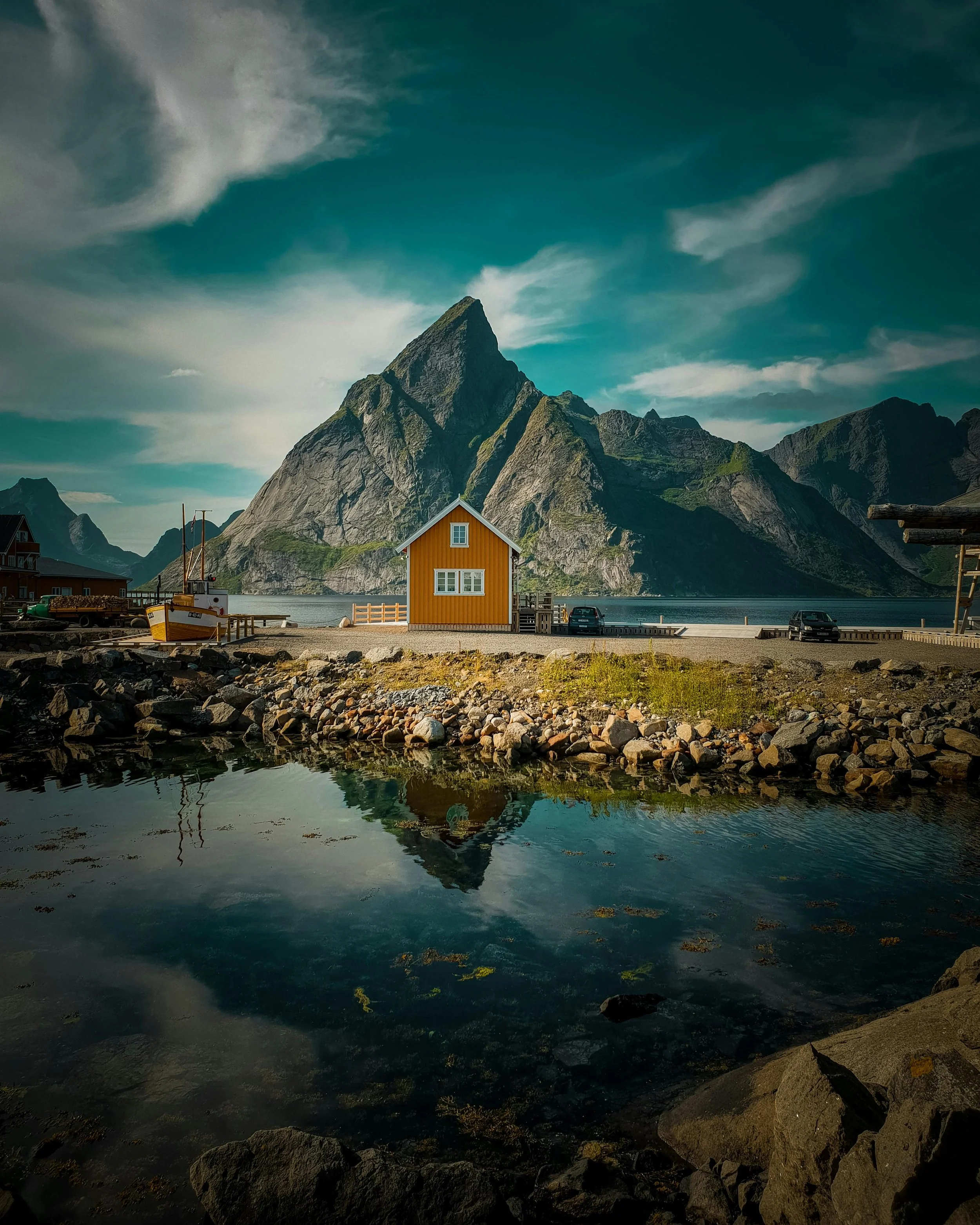Weather and Seasons in Lofoten, Norway – Your Ultimate Guide
Winter Wonders: November to March
Winter in Lofoten is magical, moody, occasionally melted—but stunning. The region enters a world of soft light and snow‑kissed peaks. Mid‑January through late March offers the most consistent “winter look,” with better chances of seeing snow rather than rain.
Expect polar night from early December to early January, when the sun barely graces the horizon, treating you to a glow‑filled “day” that feels endless.
Temperatures hover around -3 °C to 3 °C (27 °F to 37 °F), cozy by Arctic standards thanks to our oceanic climate and the warm currents crystal‑balling the Gulf Stream.
What you can do: chase the Northern Lights, ski with a guide, try dog sledding, or simply cuddle in a rorbu listening to storms dance on the fjord.
Spring Awakening: March to May
Spring tip‑toes in with melting snow, longer days, and bursts of green. Temperatures climb from roughly -1 °C to about 10 °C (30 °F to 50 °F).
It’s a playful time—sometimes drab and flat; sometimes bold and bloom‑festooned. Perfect for chasing moody shots, dramatic light, and thoughtful hikes.
Summer Paradise: June to August
Cue the confetti—summer in Lofoten is downright glorious. We’re talking midnight sun magic, with the sun refusing to set from late May to mid‑July.
Temperatures typically range from 10 °C to 18 °C (50 °F to 64 °F), and sometimes flirt with a sizzling 25 °C if we’re lucky.
June, in particular, tends to be milder and less rainy—an ideal balance.
What you can do: hike all day (and night) without a headlamp, camp, kayak, surf at Unstad, or just wander golden beaches and green slopes.
Autumn Colors: September to November
Autumn arrives dramatically—golden grasses, fiery foliage, and moody light. Temperatures settle between 3 °C and 10 °C (37 °F to 50 °F), with crisp air and shorter days.
September sees the return of the Northern Lights—twilight dancing painted across ethereal skies.
Rain peaks hit in autumn and winter, especially around October.
Head-to-Head Season Recap
Winter (November to March)
Think polar nights, dazzling Northern Lights, and a snowy landscape straight out of a postcard. Temperatures usually hover between –3°C and 3°C.
Spring (March to May)
The snow begins to melt, days grow longer, and the first signs of life and colour appear. Expect temperatures from –1°C to 10°C.
Summer (June to August)
The midnight sun reigns supreme, giving you endless daylight for hiking, surfing, and exploring. Temperatures typically sit between 10°C and 18°C.
Autumn (September to November)
Golden fields, fiery mountainsides, and the return of the aurora. Crisp air and moody skies set the scene, with temperatures from 3°C to 10°C.
Climate Clarity & Local Insights
Lofoten enjoys a surprisingly mild climate despite its Arctic latitude. The warm marine currents keep our winters less harsh and summers pleasant.
In Svolvær, for example, October brings up to three times more rain than June. Summers are often drier, warmer, and definitely more photographic.
Final Word from Yours Truly
Every season in Lofoten tells its own epic story. Snowy calm in winter, burst-out spring, endless summer brilliance, and dramatic autumn transitions. Pick your vibe or grab your camera and catch them all—it’s all good here. And I’ll be thrilled to help you chase storms or midnight sun—just say the word.
Frequently Asked Questions About Weather and Seasons in Lofoten
When is the best time to visit Lofoten?
It depends on your priorities. For Northern Lights, visit between late September and late March. For midnight sun and endless adventure days, aim for late May to mid-July. For dramatic light with fewer crowds, early autumn and late winter are ideal.
Does it snow a lot in Lofoten?
Yes, but not as much as you might expect for the Arctic. The Gulf Stream keeps winters mild compared to inland Norway. Snow is most reliable from January to March, though coastal areas can see winter rain too.
What is the warmest month in Lofoten?
July is typically the warmest, with average highs of 15°C to 18°C and occasional days above 20°C. Combined with the midnight sun, it can feel surprisingly summery.
Is Lofoten very rainy?
Yes, especially in autumn and early winter. October often claims the title of wettest month. Summer tends to be drier, with June often offering the most sunshine.
Can you see the Northern Lights in summer?
No. The midnight sun keeps the sky bright 24 hours a day from late May to mid-July, so the aurora is hidden. For aurora viewing, visit between September and April.
What clothes should I pack for Lofoten?
Always think layers. Even in summer, evenings can be cool. Waterproof outerwear, sturdy shoes, and a windproof jacket are must-haves. In winter, add thermals, a warm hat, gloves, and insulated boots.
How long are the days in winter?
In early December, the sun stays below the horizon for about a month during the polar night. By mid-January, daylight hours increase quickly, and by March you’ll enjoy over 10 hours of light each day.
How windy is Lofoten?
It can be very windy, especially during autumn and winter storms. While the wind adds drama to the scenery, it also means you should pack solid outer layers and be flexible with your plans.





